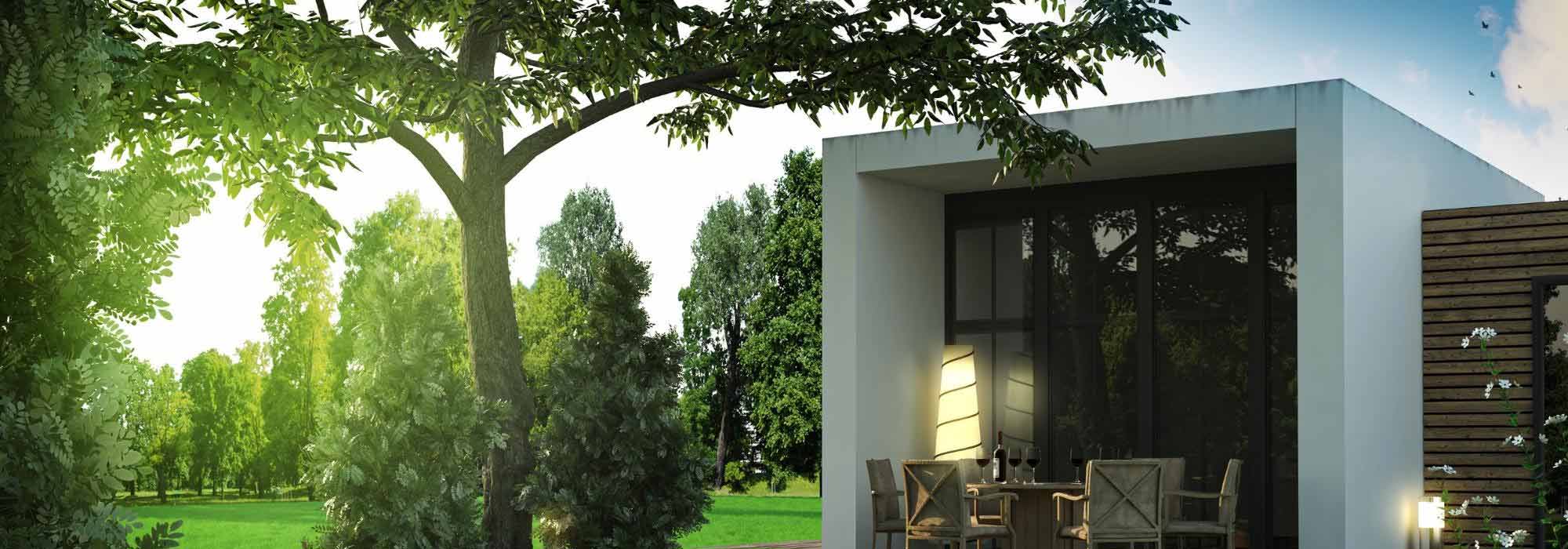
8 umbrella-shaped trees
Umbrella trees to protect against the sun
Contents
What could be better than a parasol tree to shield yourself from the sun’s rays? Parasol trees provide a comforting shelter beneath their spreading branches. And we are not the only ones enjoying the beneficial shade of these umbrella-shaped trees, as they cool the atmosphere under their foliage, offering a welcome micro-climate for the plants growing beneath. The horizontal branches invite the eye to explore the garden, suggest a hint of mystery, and diffuse a sense of well-being under their shelter. But which tree should you choose to create a natural parasol? Which tree grows quickly and provides shade, or spreads its branches to create a sort of natural refuge?
Stone pine, Umbrella pine, Catalpa, conifers or leafy trees: our selection of 8 parasol trees is here to help you find the one you will plant in your garden.
→ And to ensure you make the right choice, our plantfit application will guide you in just a few clicks among the various plants available according to your garden’s criteria…
Pinus pinea or umbrella pine: a must-have!
When looking to plant a tree for shade, the Umbrella Pine – Pinus pinea naturally comes to mind. You may consider installing it at your home, but under several conditions:
- being able to provide it with enough space, as this magnificent conifer can reach an adult height of around twenty metres with a spread of about 10m;
- being able to shelter it from the cold since young specimens are sensitive to frost and older ones only tolerate temperatures down to -10°C;
- ensuring it grows in well-drained soil with plenty of sun exposure.
After about ten years, when given these optimal growing conditions, this low-maintenance tree gradually spreads to form a true evergreen, dense plant umbrella. The icing on the cake: it produces delicious edible pine nuts!
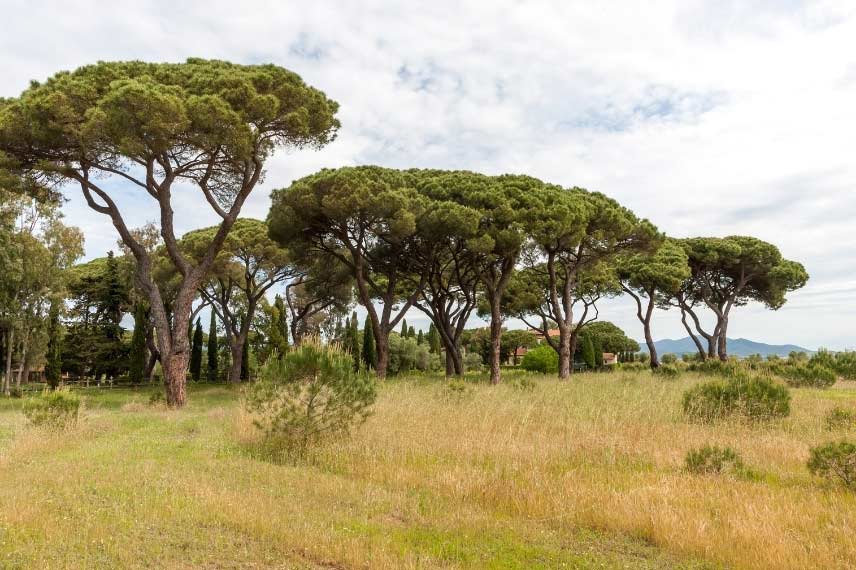
Pinus pinea
For a slightly less bulky and still evergreen alternative, we can also mention the Japanese Umbrella Pine – Sciadopitys verticillata, which has a slightly smaller adult size (Height: 15.00 m, spread: 6.00 m, slow growth). Hardy down to -20°C, it prefers semi-shaded situations in warm regions and full sun in cooler areas, always well sheltered from the wind. This Umbrella Pine does not tolerate drought and will appreciate rich soil.
Read also
9 trees and shrubs with a rounded habitAlbizia or silk tree: a parasol tree for small garden
The Albizia are small umbrella-shaped trees that are interesting for two reasons:
- their spreading habit makes them true natural umbrellas, perfect for shading a terrace or a corner of the garden
- their modest size (4 to 5m in height with a spread of 4 to 6m depending on the varieties) allows them to be planted in small gardens or even in a green courtyard.
There are several varieties, starting with the classic Albizia julibrissin ‘Ombrella’, whose name aptly suggests its purpose as a shade tree. The Albizia julibrissin ‘Summer Chocolate’ is notable for its purple foliage, which gives it a unique appeal. They are called “silk trees” due to their distinctive and magnificent summer flowering, featuring silky plumes in shades of pink, red, or white. These small trees can withstand negative temperatures of around -10°C and prefer dry, well-drained soil, as well as full sun exposure.
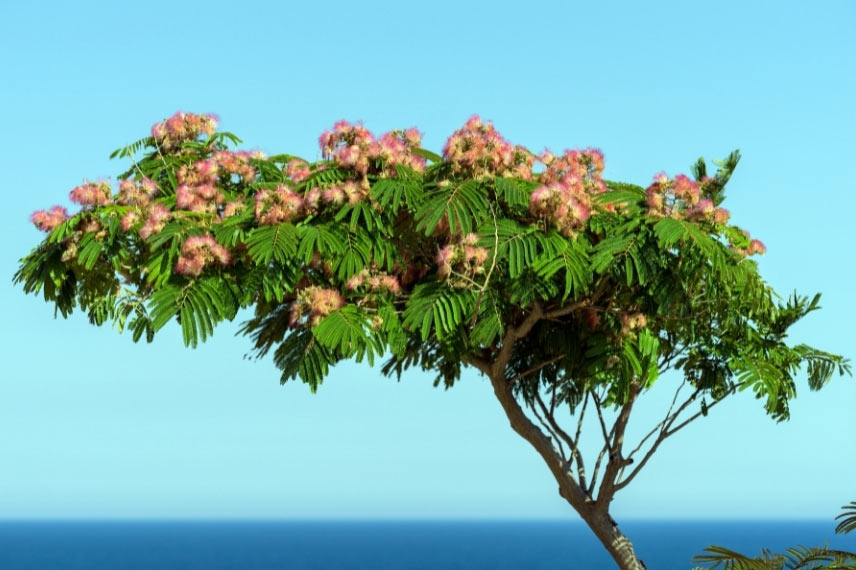
Albizia julibrissin ‘Ombrella’
Discover other Parasol trees
View all →Available in 0 sizes
Available in 1 sizes
Available in 1 sizes
Available in 1 sizes
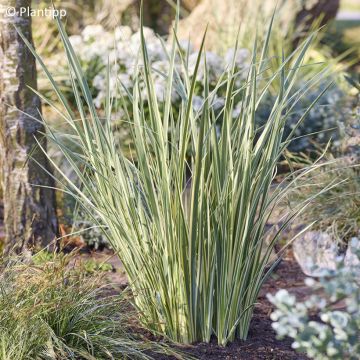
Available in 1 sizes
Available in 1 sizes
Available in 1 sizes
Available in 1 sizes
Available in 2 sizes
Available in 1 sizes
Magnolia tripetala or Parasol Magnolia: remarkable
A highly evocative vernacular name for this shade magnolia, Magnolia tripetala or Parasol Magnolia! Remarkable for its lovely deciduous foliage giving it an exotic appearance, this small umbrella-shaped tree (height: 6.00 m and spread: 5.00 m) has a spreading habit, allowing it to quickly shade an area where the sun makes you sweat, or to create a cooler zone beneath its branches for planting heather soil plants that are sensitive to overly sunny exposures. Its long, dense leaves are borne on spreading branches, and its creamy tulip flowers, while less spectacular than those of its relatives, bloom in May. Finally, its hardiness is well established, as it withstands temperatures down to -15°C.
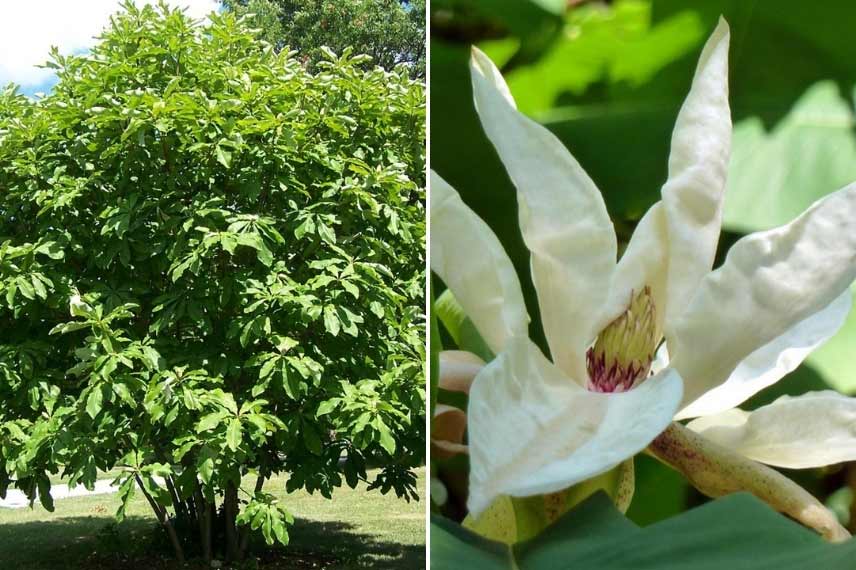
Magnolia tripetala
Catalpa bignonioides or Common Catalpa: a dense shade
How pleasant it is in the shade of a parasol tree! This small deciduous tree, with its perfectly rounded spreading foliage, the Catalpa bignonioides or Common Catalpa, is valued for its dense shade. Its large, light green leaves and abundant branches make it an effective parasol, perfect for medium-sized spaces. Its mature height is 10m with a spread of 15m. Deciduous and not particularly demanding, you can plant this outdoor umbrella tree to shade a relaxation area with a deckchair or garden lounge, to cool down an overly exposed space, or to help protect a terrace. Quite hardy, it prefers to be planted in the sun, but does not appreciate intense drought or strong winds.
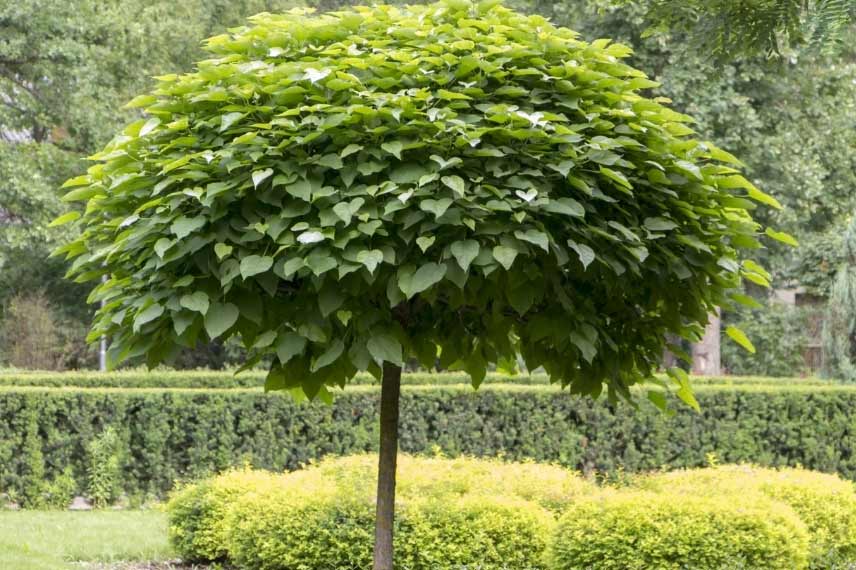
Catalpa bignonioides
Evodia danielii or honey tree: a treat for bees
The common name of this deciduous tree: Honey Tree, proves that it is a fantastic larder for bees! Its abundant, highly melliferous and fragrant flowering, in cream colour, blooms from late spring until August, giving it a lovely appeal. Its branches spread out into a beautiful, widely spreading parasol, reaching up to 10m in height and attaining a diameter of just over 5m. The Euodia danielii will thrive in rather ordinary, well-drained soil, as it does not appreciate stagnant moisture, and prefers a position in full sun or partial shade. With a fairly rapid growth rate, this parasol tree will easily withstand winter temperatures of around -15 to -17 °C.
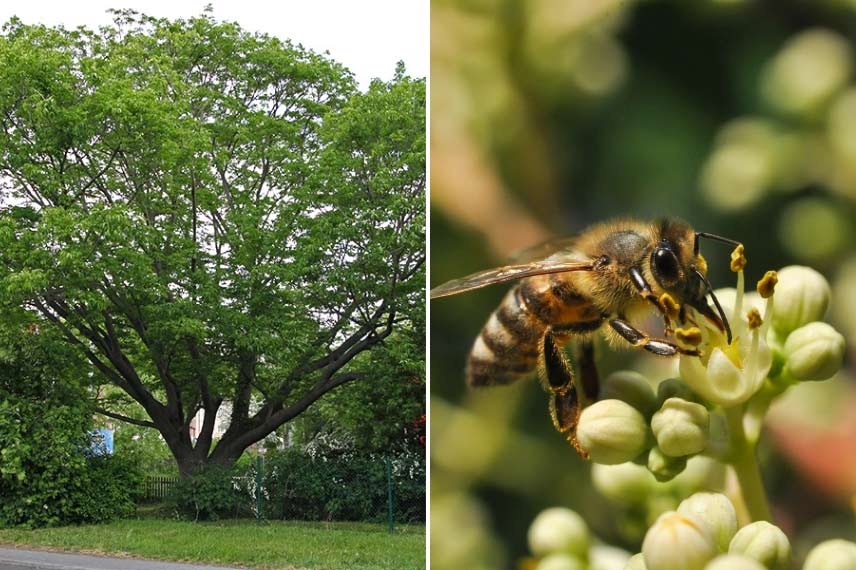
Euodia danielii
Quercus ilex or holm oak: the evergreen shade of a parasol oak
Emblematic of Mediterranean spaces, the Holm Oak or Quercus ilex, spreads its branches as it matures. Its leathery, evergreen leaves, grey-green in colour, densely adorn its vigorous branches. Its stout silhouette gradually rises to reach around twenty metres in height and ten metres in width. Its dense canopy effectively provides shade all year round in areas scorched by the sun, which it does not fear, even during the hottest hours. It can thrive in any soil, even the most ungrateful and stony, as long as it is well-drained. Hardy down to -15°C, it is resistant to both sea spray and strong winds.

Quercus ilex
Parrotia persica or Persian ironwood: an autumnal marvel
It is called Irontree due to the hardness of its wood. The Parrotia persica is a parasol tree for small gardens! This small hardy tree has a unique beauty in autumn when its very decorative deciduous foliage takes on various shades, ranging from green to purple, including yellow and orange. With its modest size (a height of 8m with a spread of 10m), it can fit into small spaces, city gardens, or housing estates, where its sturdy branches will spread horizontally from a massive trunk. Planted in any well-drained and even dry soil, it will thrive either in full sun or partial shade.

Parrotia persica
Cercis canadensis 'Forest Pansy' or Purple Redbud: colourful!
Easy to live with, this Judah treeCercis canadensis‘Forest Pansy’ boasts large heart-shaped purple-red leaves, preceding a small vivid pink flowering clustered in spring on its naked branches. Hardy and perfectly drought-resistant, its cultivation is within reach of all gardeners. Its modest size (a height of 5.00 m with a width of 3.00 m) makes it a umbrella-shaped tree, easy to plant in all types of gardens, large or small, in full sun or partial shade. It will stand out with its lovely dark colouring and its spreading habit, allowing it to form a beautiful parasol.
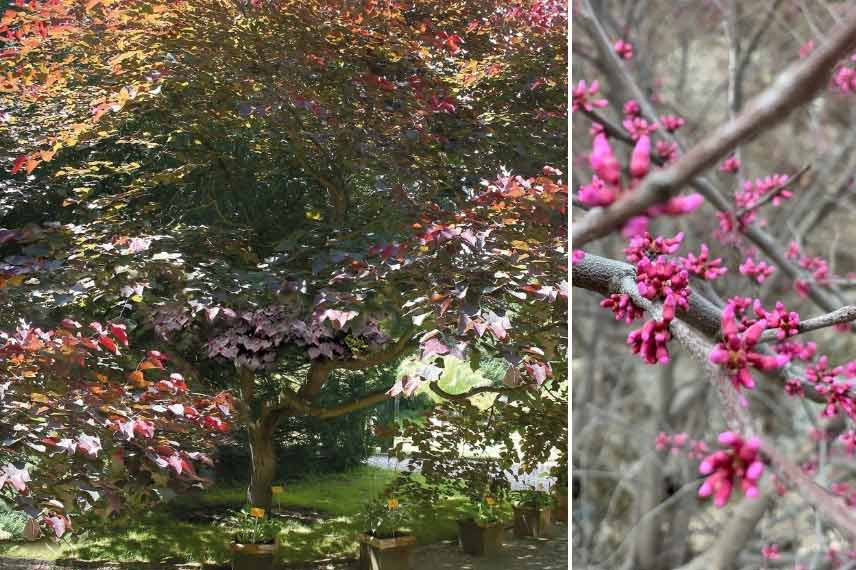
Cercis canadensis ‘Forest Pansy’
- Subscribe!
- Contents

































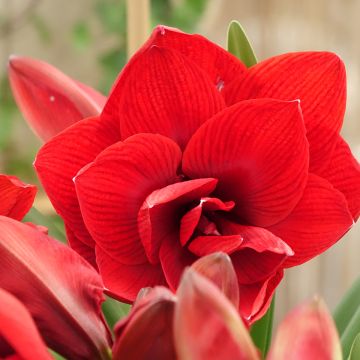


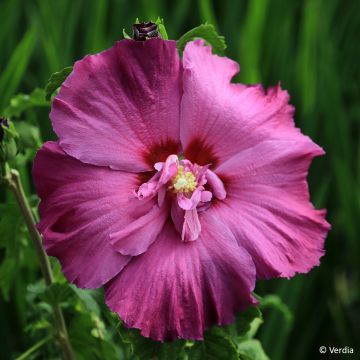

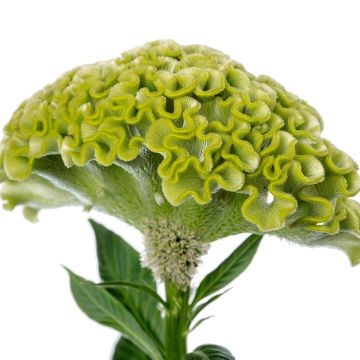
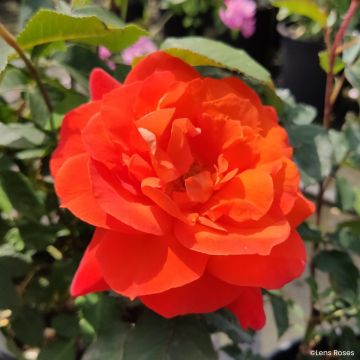

Comments